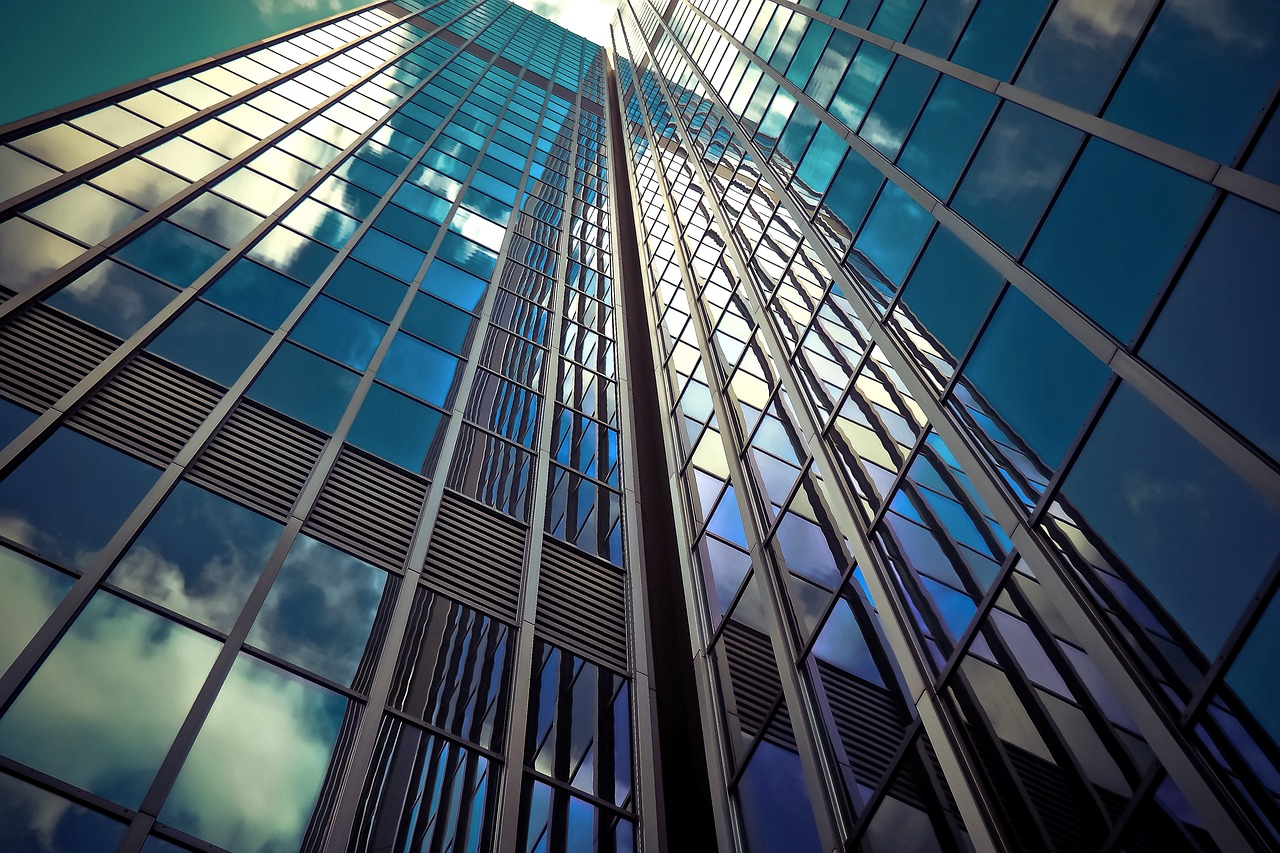Glass can be an excellent material to use in construction projects. However, there are both disadvantages as well as advantages to using glass as a building material.
So, let’s explore several pros and cons.
How Can Glass Be Used as a Building Material?
Before we look at the pros and cons of using glass for construction projects, it’s worth looking at just some of the ways in which it can be utilised as a building material. Glass has multiple uses in construction. Primarily, it’s used for windows, allowing light to enter the building.
Furthermore, glass can enhance the aesthetics and ambience of a building. For instance, it is often an integral part of modern skyscrapers, where entire walls are made of it. Glass is also commonly used for doors, partitions, and features like shower cubicles. And it is being used more and more for solar panels and thermal windows.
Because glass is such a versatile material, it has manifold uses beyond construction. For instance, it can be used to create beautiful ornaments or unique artwork.
Also, in the corporate world, glass awards are often given out as tokens of exceptional performance. Such awards are regarded as prestigious because of their crystal-clear beauty and craftsmanship.
Therefore, giving glass awards for your employees symbolises that you highly value their effort and dedication.
The Cons of Using Glass as a Building Material
While glass has many benefits, as we shall see with the pros of using glass as a building material, it’s also important to consider the potential drawbacks when using glass for construction projects. So, here are some of the cons you should know about.
Glass Is Dangerous when Broken
As you are sure to know, glass is a fragile material by nature. When it shatters, it can be hazardous due to its sharp edges. That means there is a risk of injury for occupants or passers-by.
Glass Can Provide Less Privacy
Glass walls don’t offer much privacy without additional treatments like tinting or frosting. For buildings like homes or offices where privacy is paramount, this transparency may not be ideal.
Glass Can Be a Poor Insulator
Glass isn’t a great insulator and tends to allow heat transfer readily. In climates with extreme temperatures, this could lead to higher energy costs for heating in the winter and cooling in the summer.
High Maintenance Is Required
Unlike other building materials, glass requires consistent maintenance to keep its sleek look. This might involve regular cleaning and dealing with scratches or chips that could occur over time.
Glass Can Be Costly for Construction Projects
Generally, installing glass architecture elements is more expensive than other conventional materials due to the cost associated with its processing and setup procedures.
Glass Can Potentially Cause Glare Issues
Depending on how they are oriented, large glass panels can create excessive glare inside a building at certain times of day, which might hamper visibility.
The Pros of Using Glass as a Building Material
While there are some drawbacks, using glass as a building material presents many advantages which contribute to its growing popularity in modern architecture. Here are just some of the pros.
Glass Can Provide Aesthetic Appeal
A significant advantage to glass is its ability to increase the aesthetic value of buildings. Glass enhances the exterior appeal and creates a visually pleasing environment within, contributing to an overall sense of sophistication and modernity.
Glass Provides Natural Light
One of the principal functions of glass in building design is to allow natural light into the structures. More light means less reliance on artificial lighting, which can increase comfort and reduce energy costs.
Glass Is Versatile
Glass comes in various types, such as tempered, tinted, or laminated, which offers flexibility in applications. For example, high-rise buildings often use toughened glass for strength and safety.
Glass Is Eco-Friendly
As an inert material that doesn’t emit volatile organic compounds as some plastics do, glass is considered environmentally friendly when used in construction.
Glass Is Easy to Maintain
While glass requires regular cleaning, maintaining glass surfaces generally involves less labour than materials prone to weather-related damage like wood or metal, due to glass’s resistance against elemental factors like rain and wind.
You Can Create the Illusions of More Space by Using Glass
The transparency of glass can create an illusion of more space even within limited dimensions, expanding visual boundaries. That means it is ideal for making small spaces appear bigger.
Some Glass Can Improve Heating and Cooling
Certain types of glass, such as low-emissivity glass or solar control glass, can significantly reduce heat loss in winter and prevent overheating in summer. That not only improves the comfort level within buildings but also leads to significant energy savings.

